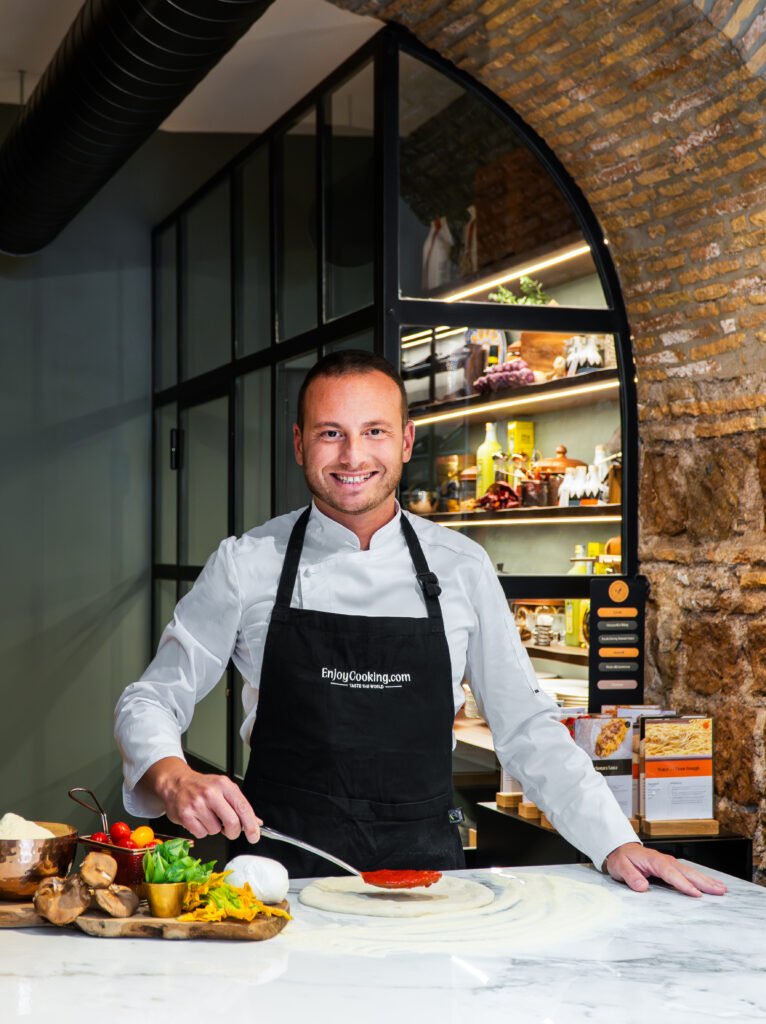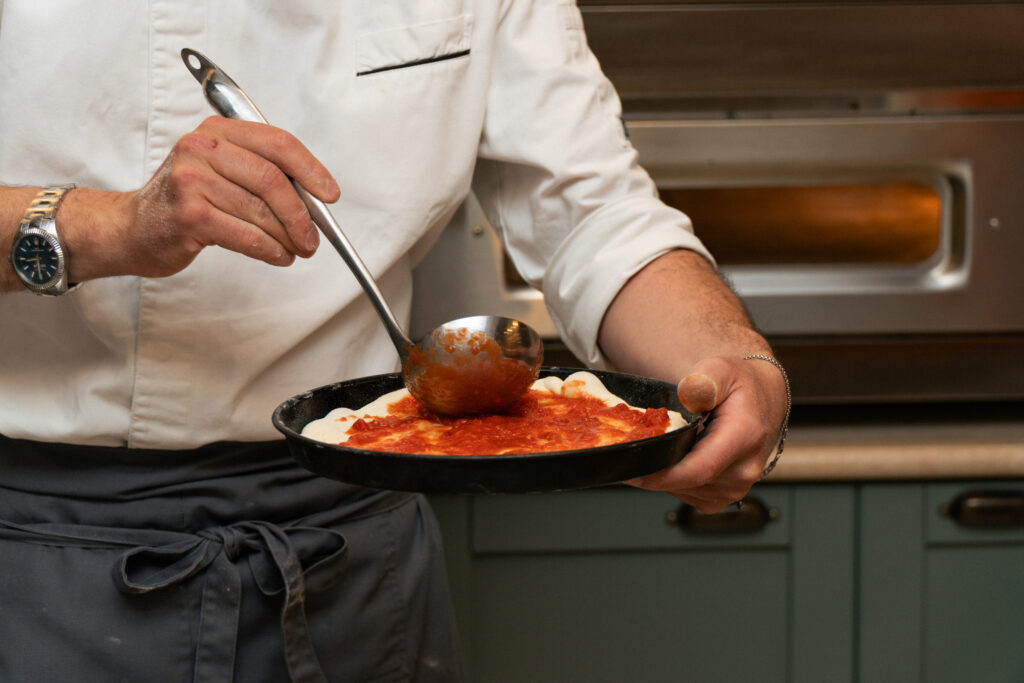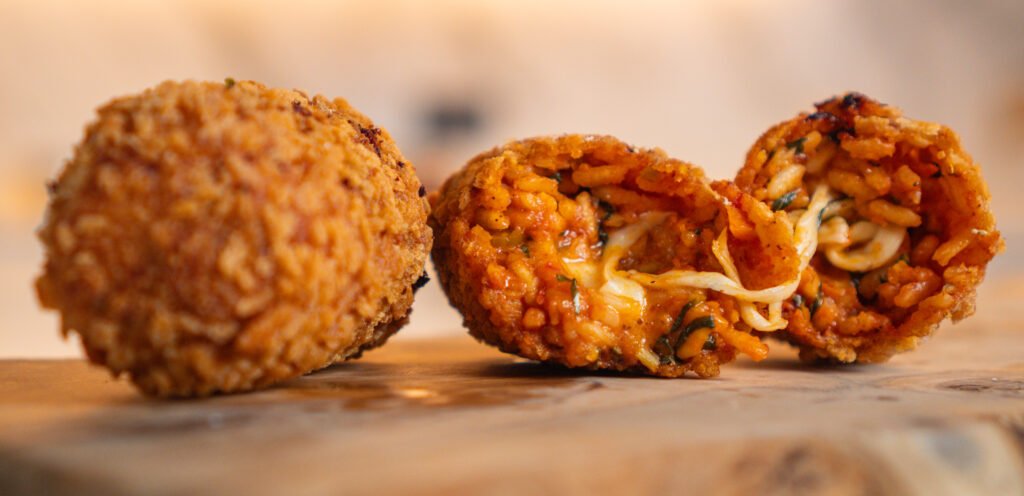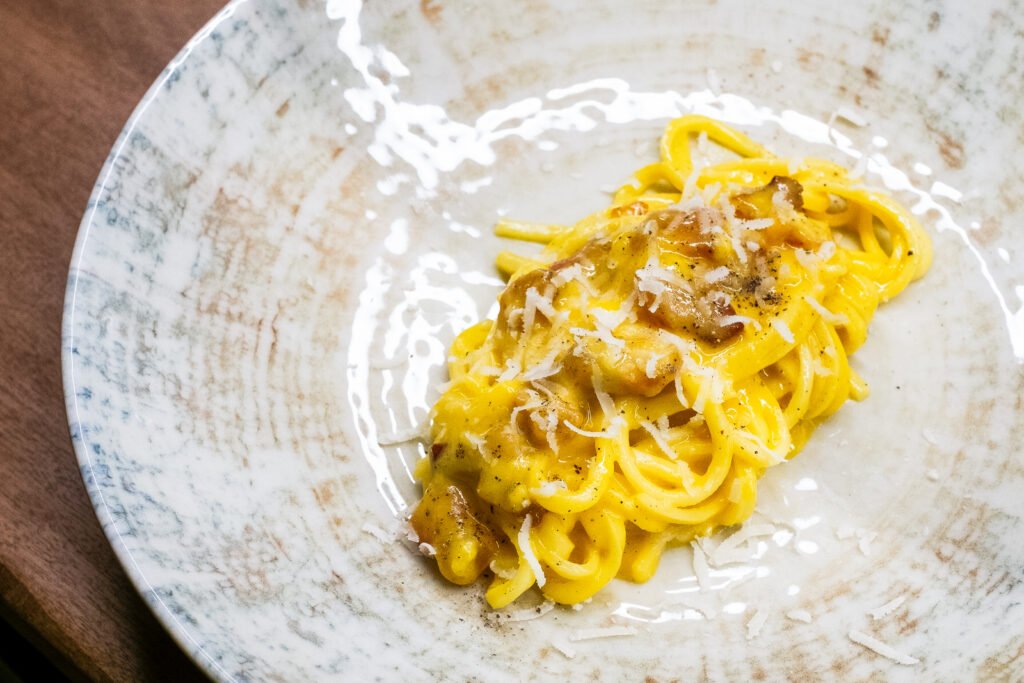Pizza is rivaled only by pasta as the most globally beloved export of all Italian food. But you might be surprised to learn that there’s no such thing as traditional “Italian” pizza. Like many things in Italy — from recipes to dialects — pizza varies radically according to region (or more accurately, city) with Roman-style pizza and Neapolitan-style pizza the best-known by far.
But what exactly is Roman pizza? And what makes this pizza style so special?
We took an EnjoyCooking Pizza Cooking Class to find out.
What is Roman-Style Pizza?
As EnjoyCooking’s Chef Marco explains, the main difference between Roman pizza and Neapolitan pizza is that the Roman recipe uses olive oil in the dough while the Neapolitan version does not. “The magic,” Marco tells us, “is always in the dough.” Olive oil keeps the dough nice and supple, meaning the crust can be hand stretched to its characteristic thinness.”


Olive oil-infused dough is not the only thing that sets Roman-style pizza apart. As we knead and stretch our pizza dough, Marco lets us in on more secrets about the rustic flours that Roman pizzaioli (pizza-makers) use because of their ability to absorb water and stand up well to the long fermentation and rising time required – up to 48 hours in some cases.
The final stages of Roman-style pizza preparation are much faster than for other pizza types. The pizza is cooked for up to three minutes at around 350°C (662°F), resulting in something far crispier than what you’ll find in Naples. But before this, the pizzaiolo has to shape the dough and top the pizza, which Chef Marco does with aplomb.
Traditional Roman-style pizza starts as a wafer-thin disc of silky elastic dough which Marco spins and flips through the air. He tells us that Roman pizza has toppings all the way to the edge, leaving only the tiniest rim of crust for fingers to grasp.
Marco tells us that the first Roman-style pizza toppings were simple: pecorino cheese, pepper, and basil. But the most popular Roman-style today might be the Capricciosa, which includes toppings of mushrooms, prosciutto, artichokes, olives, and a sliced boiled egg. Today we’re experimenting with some traditional toppings from a local farmers’ market: tomato passata, mozzarella, fresh cherry tomatoes and prosciutto.

When we’re finished, Marco seizes his paddle and swoops each pizza into the oven. What emerges after just three minutes is a thin, smoking pizza with a tantalizing crispy and crunchy crust, making it lighter and easier to digest. (Especially when paired with lovely local wines).
Buon appetito!
Where to Enjoy Roman-Style Pizza in Rome
You’ll find two types of Roman-style pizza throughout the Eternal City: round pizza or ‘al taglio’ which is by the slice. Long strips of pizza are topped with the most delicious toppings and then cut and sold by weight and wrapped in paper. It is original Roman street food and it is an institution of the city loved by all but you can also find it all over Italy.
The best place to try traditional Roman pizza is Alice, a popular and beloved chain found throughout the Italian capital. Alice serves pizza by the slice, and most customers start with a supplì (a delicious deep-fried rice ball with ragu or cheesy stuffings) or a potato croquette.
Learn to make Pizza in Rome
Ready to become a Roman chef for the day? Join a friendly group of fellow foodies on a small-group Pizza & Gelato Cooking Class in Rome. We’ll welcome you to one of our two stunning venues, one right by the Colosseum, the other in the Jewish Ghetto right in the heart of the historic center.
Here, after a welcoming drinks reception with free-flowing wine, you’ll learn how to make Pizza, Gelato, and Supplì – all under the guidance of a friendly professional chef. At the end of the experience, you and your group will dine on what you’ve made for a delicious lunch or dinner.
➡️ Make Supplì, Pizza & Gelato near the Colosseum
➡️ Make Supplì, Pizza & Gelato in the Jewish Ghetto
Looking for something more private and personalized? Check out our Private Pizza and Gelato Cooking Class!










 Back
Back


